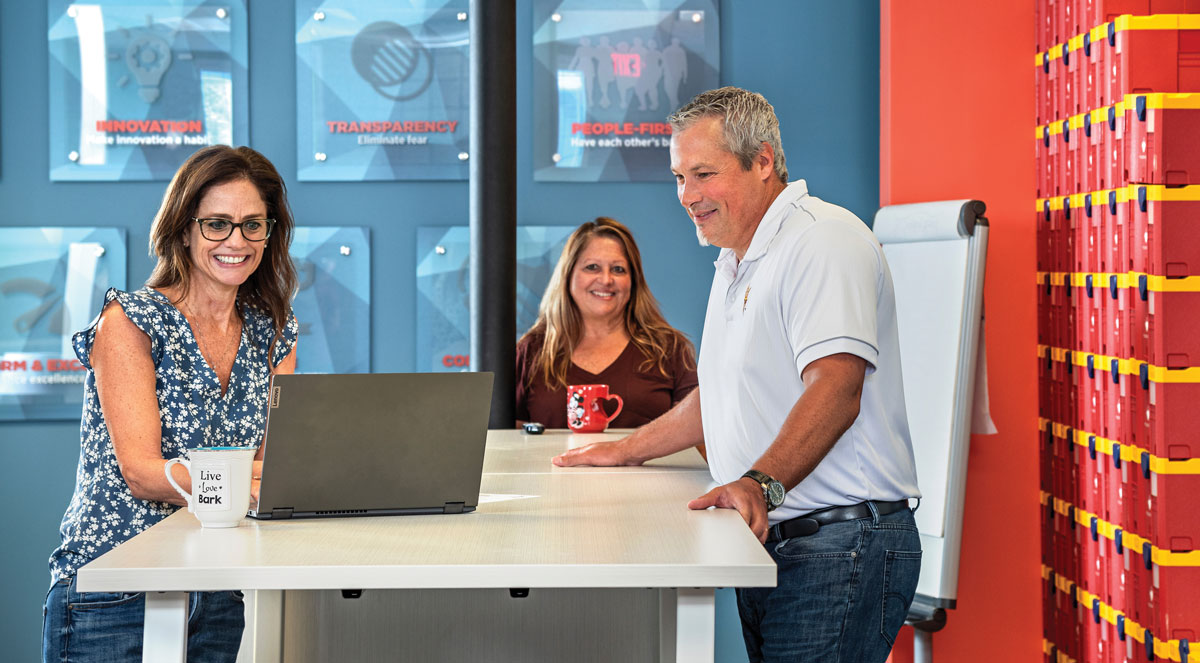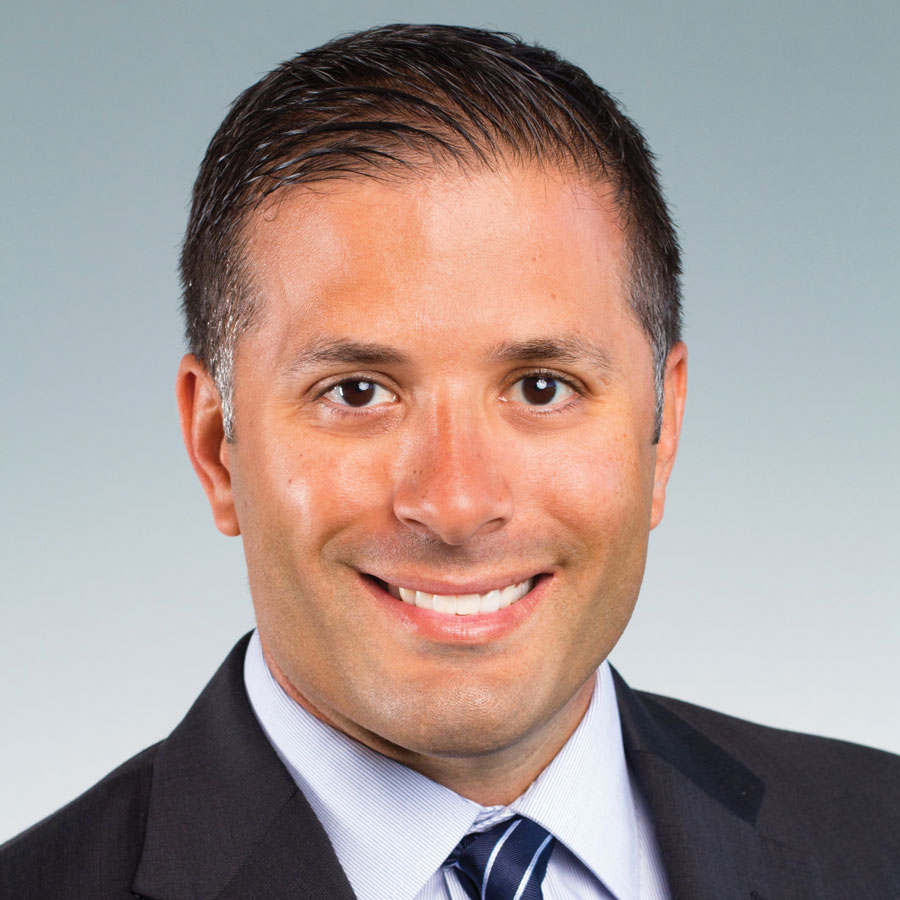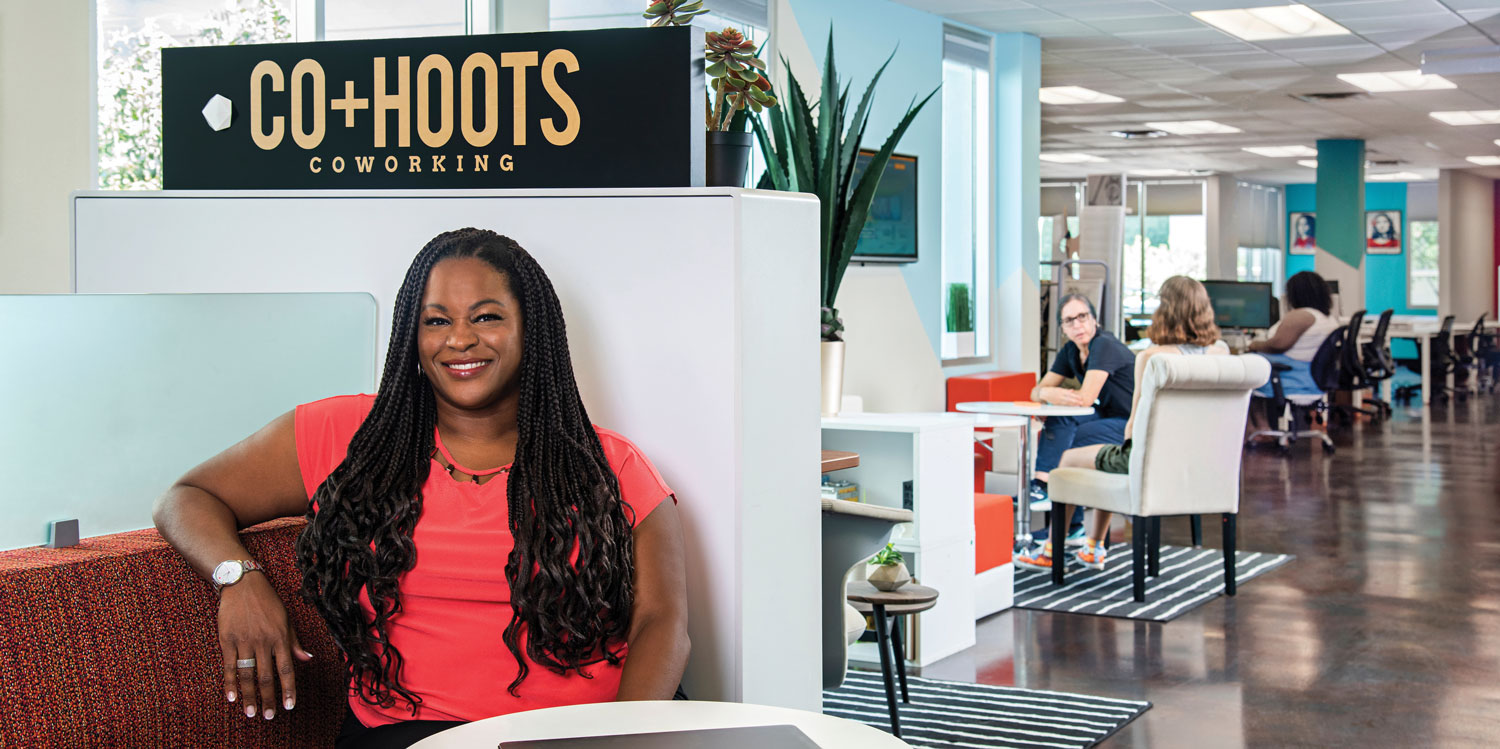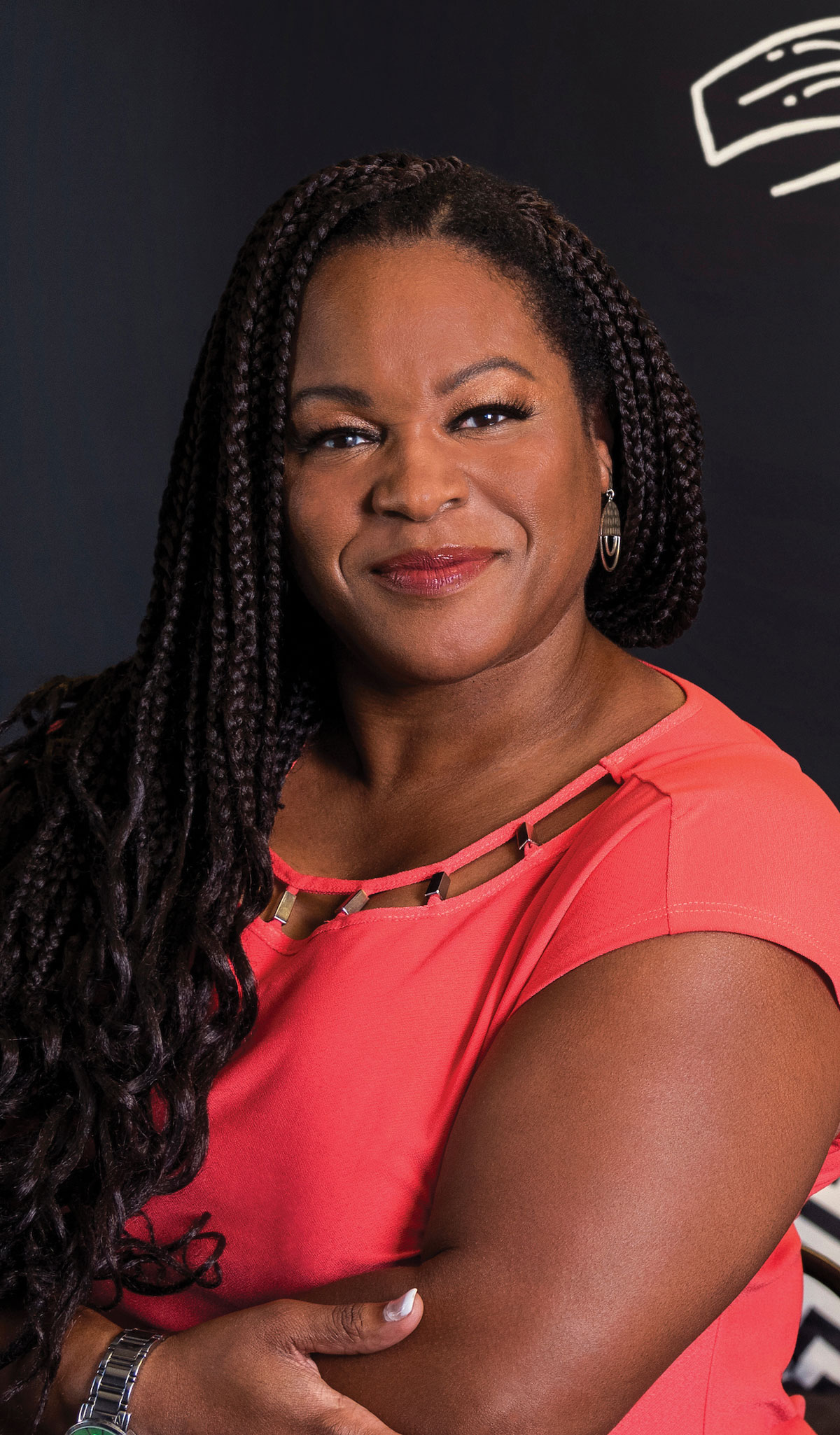(BS Marketing ’92)
o you remember life before the word pandemic? Before dogs barking were common business-call sound effects? Before the phrase “you’re on mute” was heard in just about every meeting? Do you miss those days? Chances are, they’re not coming back.
What will “going to work” mean in the postpandemic age? W. P. Carey School alumni and professors weigh in on what’s ahead and what business leaders should know about managing remotely.
For organizations that sent workers home when shutdowns began and are just starting to bring people back into the office full or part time, Rick Bowers (BS Marketing ’92) says it’s time to take stock of both the work at hand and the people who do it. Bowers — president of TTI Success Insights, a company that helps other organizations maximize human potential through employee assessments and related consulting — recommended a process he calls “reboarding.”
“Reboarding is the act of reconnecting and reengaging your employees to make sure that people haven’t changed because of this significant emotional event we’ve all lived through this past year,” he explains. “It’s making sure the job a person was in before the pandemic is still the same job and making sure the person is still the same person.”


Bowers admitted with a laugh that as the president of an assessment company, he’d like to see organizations do more assessments and employee testing. The value, he says, is that assessments help managers get a better understanding of how to work with each individual. If companies forgo that step, he recommends managers spend a lot of time in one-on-one meetings to reconnect with direct reports.
Fostering personal connections with employees also will help with another issue that remote work can bring: the decline of corporate culture.

“I’ve had the experience of hiring a new person without having any actual physical contact,” recalls Ray Perez (BS Supply Chain Management ’00), vice president of procurement for Siemens Healthineers, a global medical technology company. “It was challenging to initiate that person into our corporate culture.”
Bowers notes, “A lot of people have hired employees who’ve never stepped foot into the office. This new employee has never shaken a hand or sat across the table from co-workers to understand what it’s like to be part of the organization. With remote work, culture can deteriorate. The more we can get connected and understand what’s going on with our employees, the better off the organization will be.”
Blake Ashforth, Regents Professor and Horace Steele Arizona Heritage Chair, has found that staying connected not only strengthens corporate culture, it also boosts productivity.
According to Ashforth’s research on bonding with remote workers, successful remote relationships have predictable interactions as well as knowledge of co-workers as individuals.
His studies showed that when people can personalize their relationships, they’re more efficient team members and feel better about being on the team. “We think of home and work as separate, and friendships as different from officemates,” he explains. “People who were able to blend the two were able to get things done — get immediate responses, get the benefit of the doubt if problems arose, and have people vouch for them.”

To that end, Perez says he’s made a point to touch base with employees individually and regularly now that he can’t stay connected to them by just walking up to an employee’s desk and having a quick chat.

Now, he schedules biweekly 30-minute calls and makes sure employees know they can — and should — call with any questions. “I’ve made it clear that if I’m ‘green’ on Microsoft Teams, I’m available. I’ll certainly pick up the call,” Perez says. He’s also planning some get-together activities, such as communal meals and team-building outings. “It’s important to see people in person and get that connection back.”
Bret Giles, a W. P. Carey marketing professor of practice and co-founder of four specialized marketing agencies that have fully remote workforces, has found some creative ways to stay connected. “We’ve spent a lot of time over the past year trying to build up a culture where people feel they’re still getting the support they need from their supervisors and us as co-founders,” he says. Part of that effort is a monthly “coffee talk” that allows employees to simply chat virtually with company leaders. “The intent of the meeting is to recreate almost a serendipitous type of environment … the proverbial watercooler.”
Another get-to-know-you meeting Giles holds is a Friday event called Pit Stop. Hosted each week by a different employee, Pit Stop is a free-form virtual gathering where the hosting employee creates an agenda but anyone else can add to it, as well. That agenda, by the way, doesn’t need to focus on business. “We had someone do a whole session on how to make mojitos,” Giles recalls. “He made one onscreen while everyone watched.” Other topics have included new tools for graphic artists, a new account update, and a presentation on art itself, Giles says. And the final five minutes of each Pit Stop are dedicated to giving employees an opportunity to recognize their co-workers for something they did during the previous week.
Ashforth has found that people’s sense of self reflects how others perceive them, so recognition and communication go a long way with helping employees bond and experience well-being. Bowers sees evidence of this in a 1920s experiment called the Hawthorne studies, which included altering lighting in a factory to see if it would affect worker productivity. “They put brighter lights in a certain area, and engagement went up. They put dimmer lights in another area, and engagement also went up,” he recalls. “The result of the study suggests that as long as employees feel like you’re paying attention and care about them, engagement goes up.”
Erica Scott (BS Global Business ’01, MSIM ’08), CEO and founder of Civilian Connections, an employment firm that specializes in placing ex-military job candidates, says it’s part of the eye-opening work-from-home paradigm shift that COVID-19 created. “It blew the doors open as far as where people reside and how business functions,” Scott says. It’s something she’s seen coming, too. “I’ve been asking my clients for a long time, ‘Do you need that person [to be] down the hall, or do you need the talent?’ They’d say they needed both. I’d tell them they need the talent.”
What’s more, employees know companies need their talent. “Now employees have the power,” Scott says.
A poll conducted on behalf of Bloomberg News by Morning Consult in May 2021 confirms this assertion. Among survey participants, 38% said they’d consider quitting if their employers were not flexible about working remotely. For millennials and Gen Z workers, that number jumped to 49%.
“Recruiting is more competitive now,” Scott says. “Before, when you were recruiting, that person would have to be in a specific state or city. That’s not necessarily the case anymore.”
To meet the challenge, she says, employers must understand worker priorities, particularly those in younger generations. “What candidates are looking for now is purpose-driven organizations that are engaged philanthropically. They’re looking for corporate social responsibility,” she says, adding that if companies are involved in the candidate’s causes, it’s all the better.
Remote work arrangements also attract younger workers, according to Giles, whose 68 employees all work remotely. “As a creative agency, we have a lot of millennials, a lot of Gen Z employees. They want to travel, so remote work allows us to support that,” he says. “They can work from Thailand one month and Milwaukee the next.”


Jen Vasin (MBA ’00, BS Management ’96) is senior vice president of human resources at Insight Enterprises, a global provider of digital solutions that help organizations maximize the business value of IT. Vasin says she has found recruiting remotely has drastically improved the process and candidate experience — something she wouldn’t have believed in days past. “We don’t need to worry about traveling and getting people back and forth,” she says. “If you’re hiring a leader, that candidate may need to speak with 10 people,” requiring a lot of coordination and a lengthy candidate experience.
Remote work also opens up the marketplace, Vasin says. “The hiring market is tough right now, so having access to potential teammates all over the globe is a spectacular benefit of this.”
Companies are on board for remote workers, according to a poll of 150 executives conducted by national consulting firm West Monroe earlier this year. Some 20% of executives said they’d already implemented their hybrid work (office-occasional) models, and 48% said they would have such models in place by summertime.
According to Vasin, Insight is opting for a hybrid work schedule where collaboration will be prioritized. “There will be physical locations and offices, but our teammates will look at them differently. We’re transitioning offices from a place to work to ideal locations for collaboration,” she says. “The office workday will look different forever. Teammates will ensure they are on-site for critical meetings and collaboration opportunities, but they won’t sit at a desk from 8 a.m. to 5 p.m. just to be sitting there to work — they’ve now proven to themselves, their co-workers, and their employers that they can work anywhere aided by incredible technology solutions. Many will work with their managers to shift schedules around to accommodate their work-life fit.”
Siemens Healthineers is letting managers decide how to bring people back to the office — or not — depending on company-provided guidance. “Pick the best place for your team’s performance,” explains Perez. “The place follows the activity. If you’re doing collaboration or workshop-type things, that would be in-person.” He suspects his team’s work will remain remote about 75% of the time.
All those employees working remotely bring another risk: When COVID-19 triggered the work-from-home stampede, it shattered any remaining notions of a physical cybersecurity perimeter for a company’s information technology systems, Vasin says. That presents potential exposure.


- 8% in the office full time
- 22% remote full time
- 52% hybrid (part office, part remote)
- 18% fully flexible
Insight’s cybersecurity team advises clients to take several steps, including conducting risk assessments on all IT systems and governance policies, giving people access to only the systems they need, and switching to multifactor authentication approaches that Microsoft estimates can block 99.9% of hacker attacks.
Train employees diligently, too, Vasin urges. “Most cybersecurity attacks happen because an employee clicked on something they shouldn’t have,” she explains.
Along with cybersecurity, Insight engineered new solutions for physical safety. While most of the company’s teammates could work remotely during the pandemic, Vasin says, “teammates at our warehouses and distribution centers stayed on site throughout the pandemic. They were our essential workers getting IT equipment to our clients.”
To protect those workers, the company created a disease detection and prevention platform based on Internet of Things technology and artificial intelligence that includes a mobile app through which employees answer a few health-related questions each day before reporting to work. Depending on the employee’s answer, they may be instructed to stay home. The platform also includes thermal cameras that detect elevated temperatures in staff and automatically send alerts to the teammate so the person can take appropriate action.
“Our teammates feel safe, and know we care for their well-being,” Vasin says.
Whether in the office or visiting via Zoom, showing employees you care is a winning move any company can take.